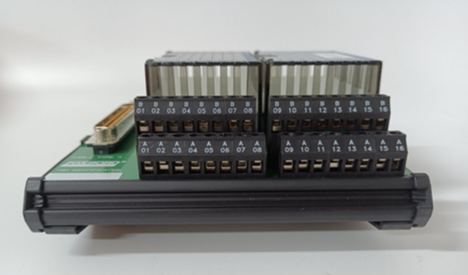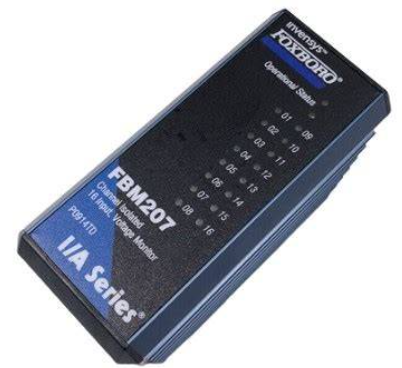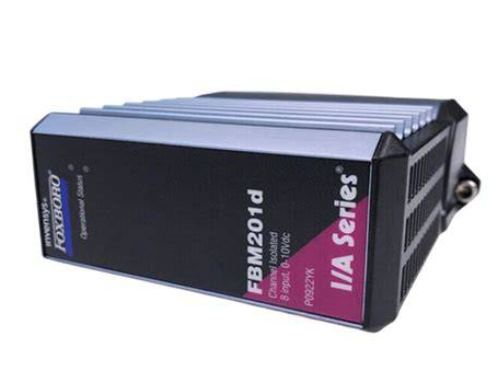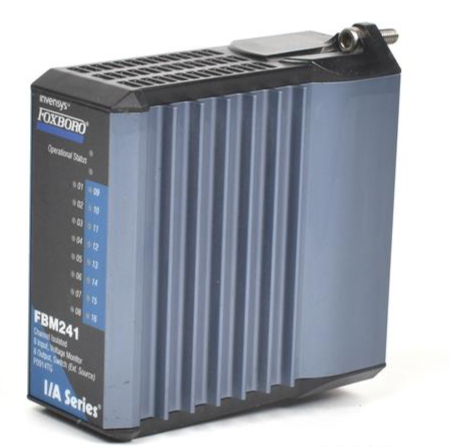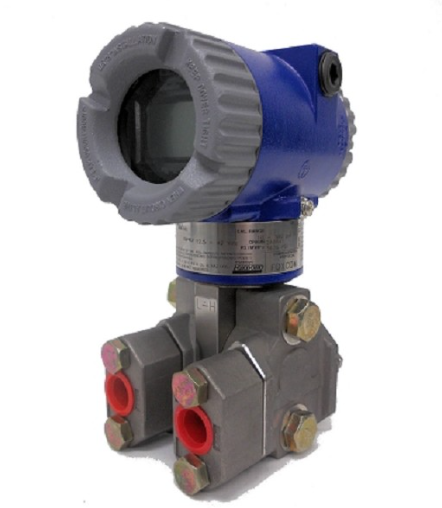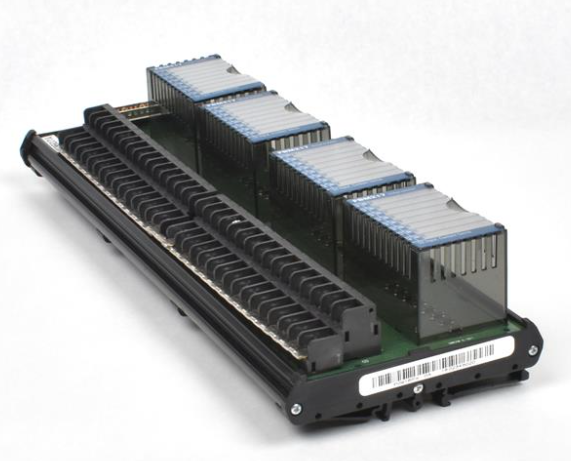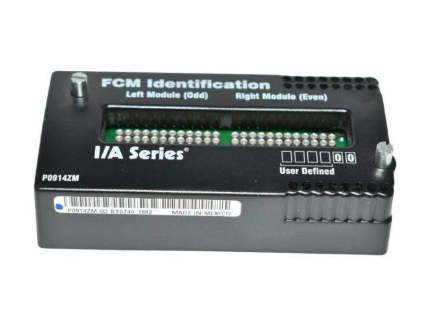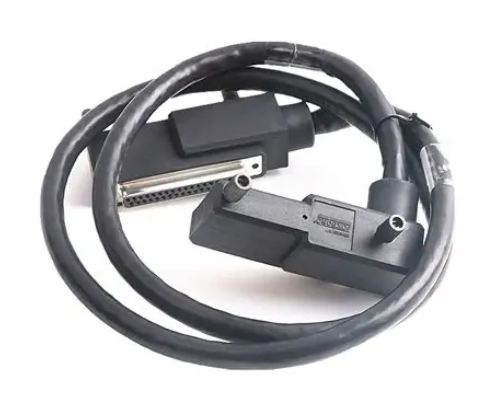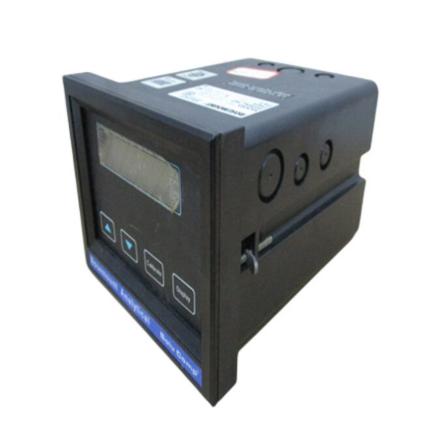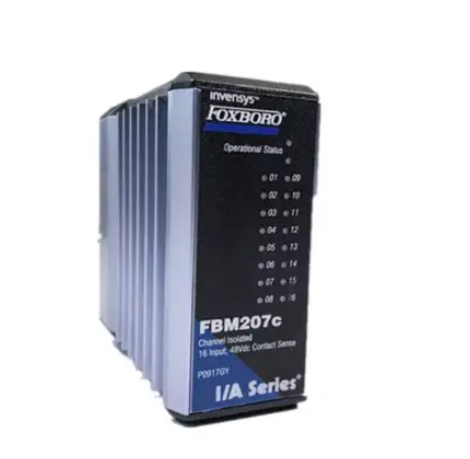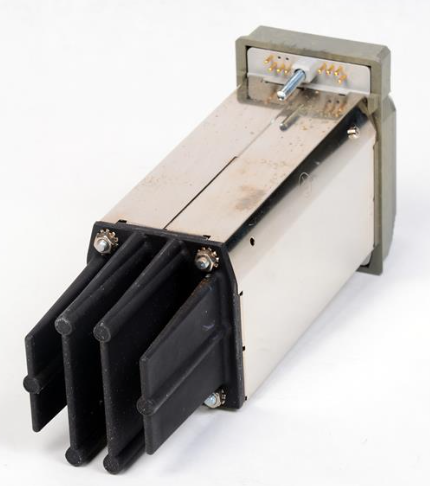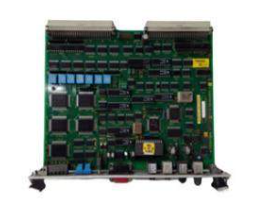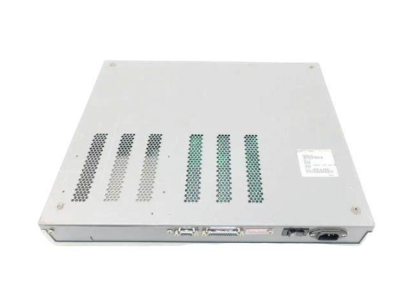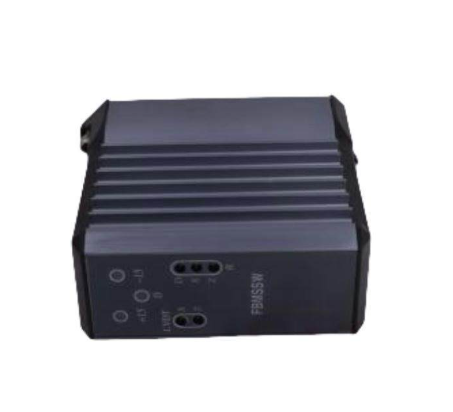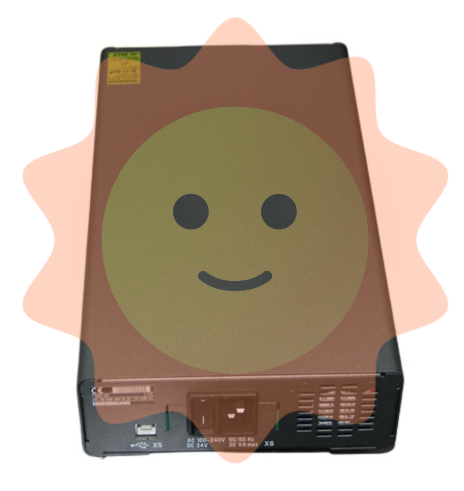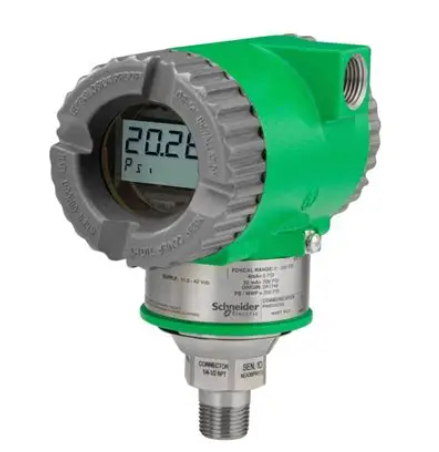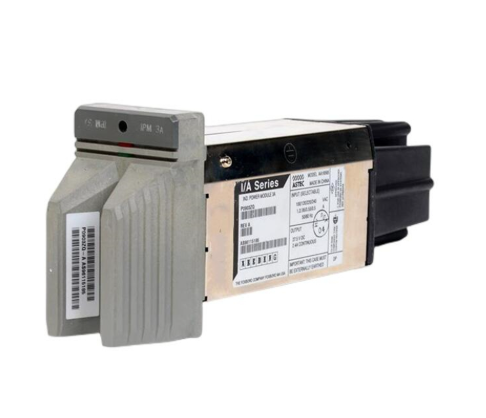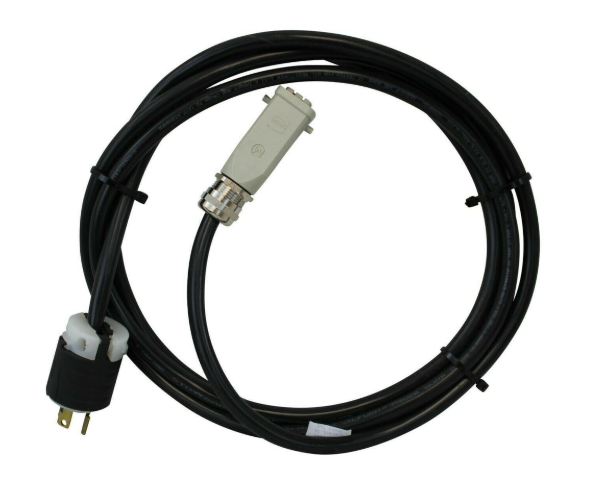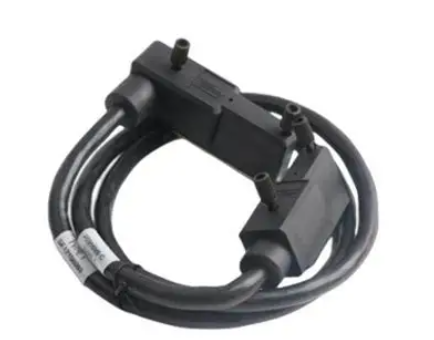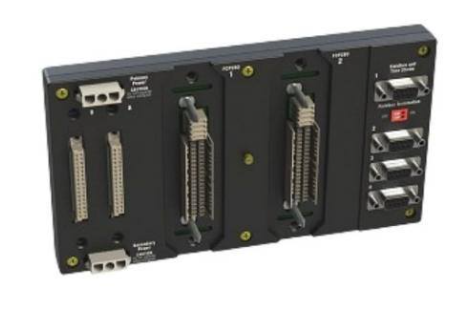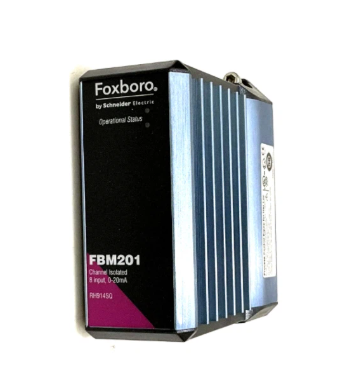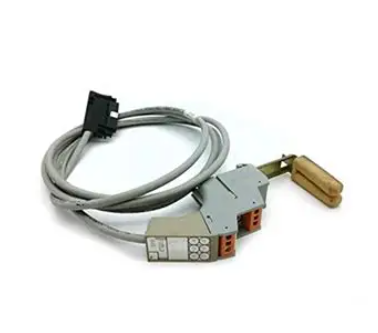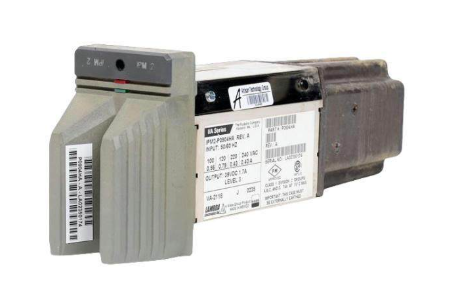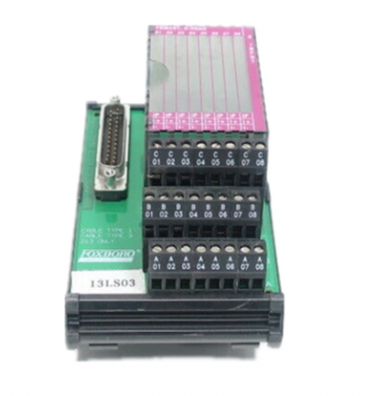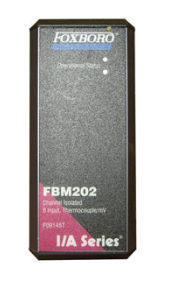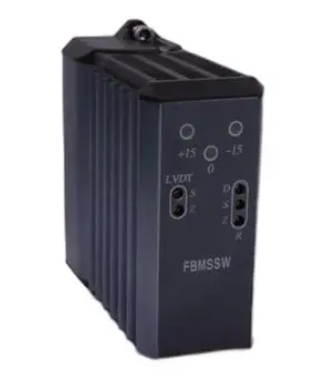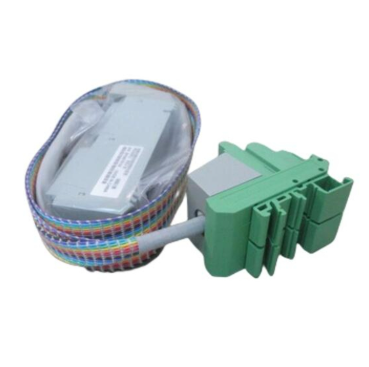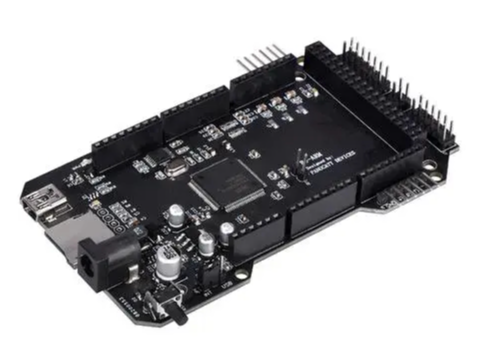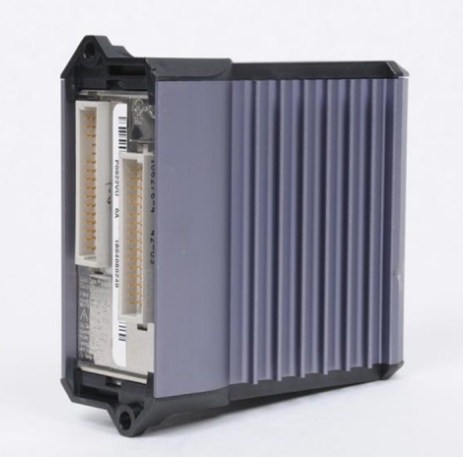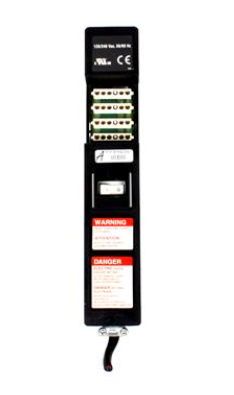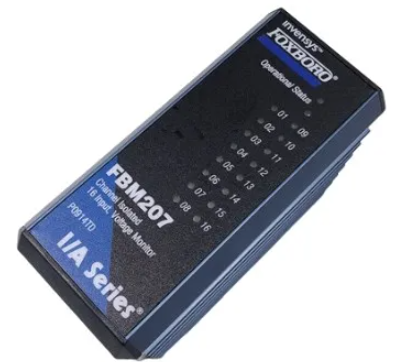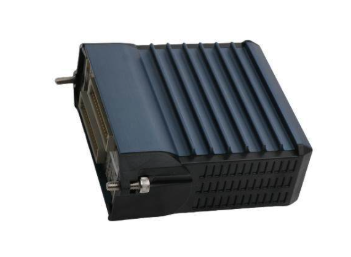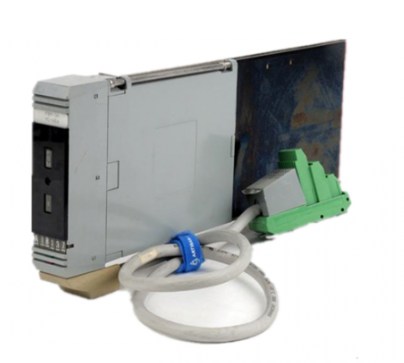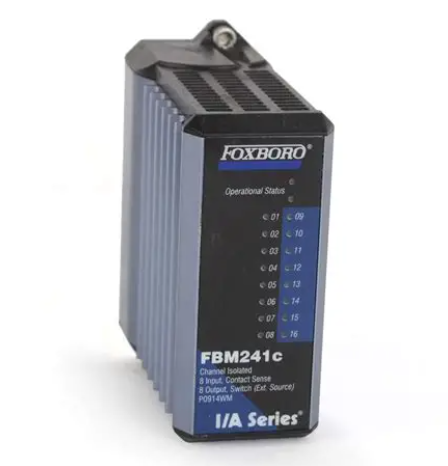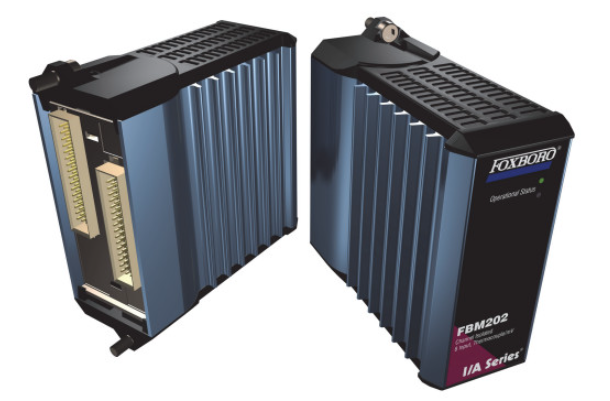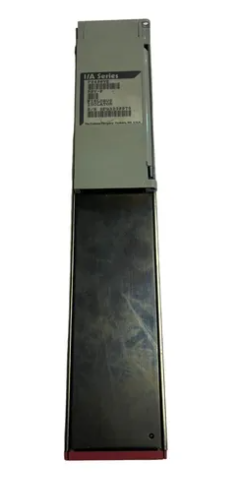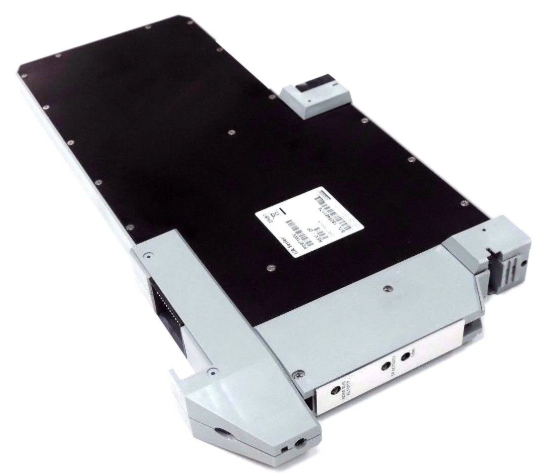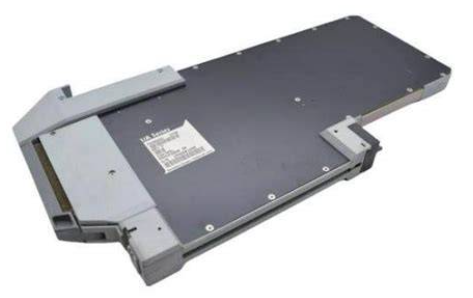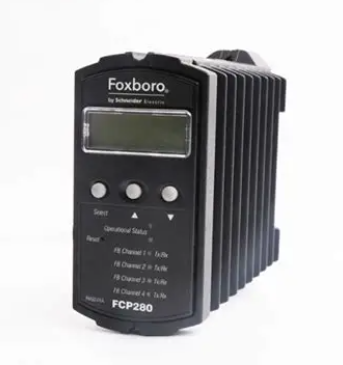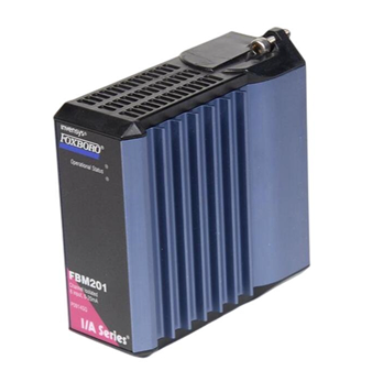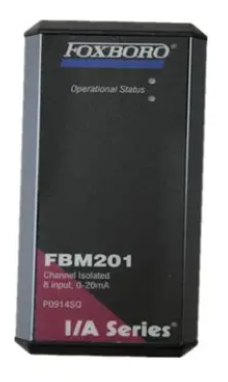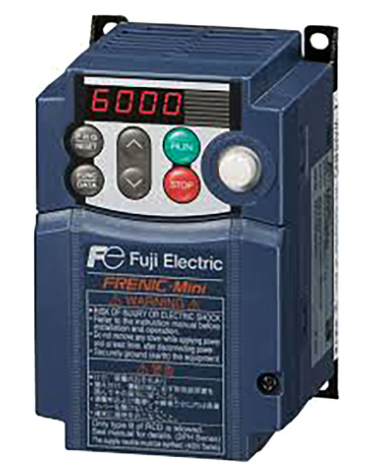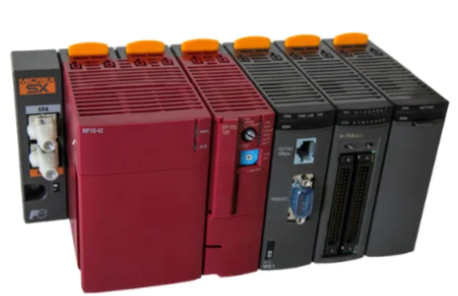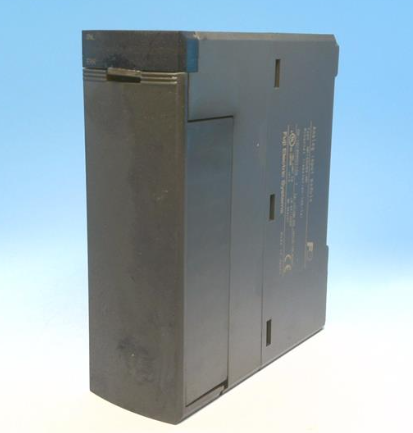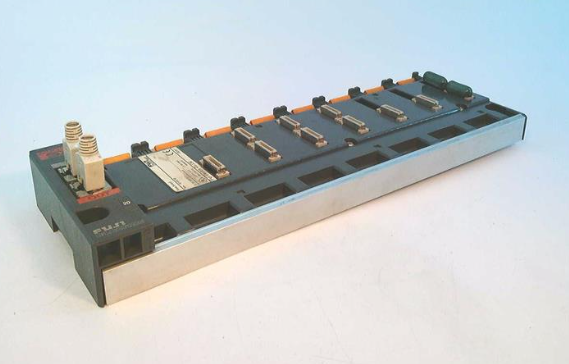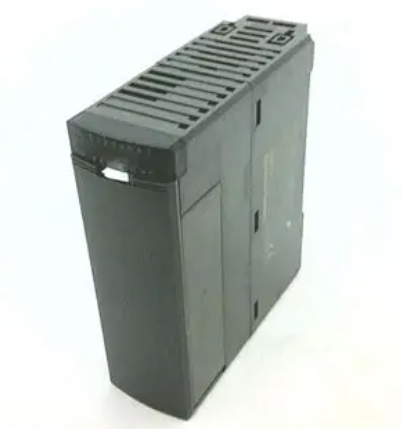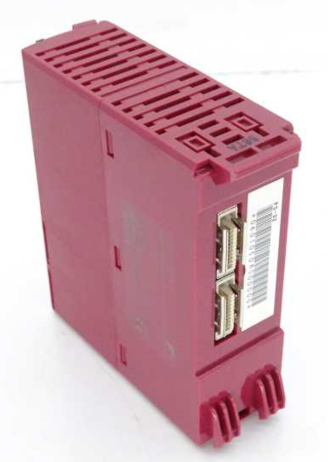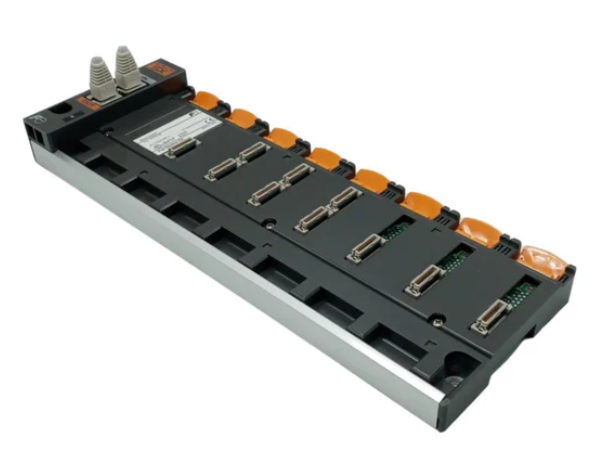WOODWARD 505 Steam Turbine Controls
WOODWARD 505 Steam Turbine Controls
Brand background
WOODWARD, as a globally renowned provider of industrial control solutions, has a profound historical background and excellent technical reputation in the field of power system control. Since its establishment in 1870, we have been dedicated to designing, manufacturing, and servicing various control products, providing core control technology support for key industries such as aerospace, power generation, and industrial drives. With continuous technological innovation and a persistent pursuit of quality, WOODWARD has set an industry benchmark in the field of steam turbine control. Its products are widely used in various industrial facilities around the world, playing a key role in ensuring efficient and stable operation of equipment.
Product overview
WOODWARD 505 is a digital steam turbine controller with a microprocessor as its core, carefully designed for precise control and reliable protection of industrial steam turbines. Its original design intention is to provide standardized and customizable control solutions for various steam turbine application scenarios, covering from simple single valve turbine control to complex multi condition turbine systems. The 505 controller is encapsulated in an industrial grade hardened casing, suitable for installation in the system control panel of the factory control room or placed next to the turbine for easy on-site operation and monitoring. The front panel integrates the functions of a programming station and an operator control panel (OCP), greatly facilitating engineers to program and set according to specific factory needs. It also makes it easy for factory operators to start, stop, and switch control modes of the steam turbine.
Specification parameters
(1) Power specifications
Model 9907-162/9907-163: Supports 18-32 VDC power input and is suitable for industrial environments that require high power stability and use DC power supply.
Other models: can adapt to AC power sources such as 220 VAC, meet the usage needs of different power infrastructure conditions, and enhance the product's versatility in various industrial scenarios.
(2) Size specifications
Ordinary panel installation dimensions: approximately 14 inches (356mm) long, 11 inches (279mm) high, and 4 inches (102mm) deep. The compact exterior design allows it to be flexibly installed in various control cabinets, saving space while not affecting its functionality.
The optional NEMA 4 bulkhead installation shell size is approximately 20 inches (508mm) long, 20 inches (508mm) high, and 7.6 inches (193mm) deep. This shell has waterproof and dustproof properties and is suitable for harsh indoor and outdoor environmental conditions, further expanding the product's application range.
(3) Environmental adaptability parameters
Working temperature range: The standard model ranges from -25 ℃ to+65 ℃, which can adapt to temperature changes in most conventional industrial environments and ensure stable operation under different seasons and regional conditions. For products with NEMA 4 enclosures, the operating temperature range is -25 ℃ to+55 ℃, which maintains good temperature adaptability while providing protective features.
Humidity adaptability: Through Lloyd's env2 test # 1, it has been shown that it can work normally within a certain humidity range, effectively avoiding electrical failures caused by humidity issues and improving product reliability.
Anti impact and vibration performance: In terms of impact, it meets the US military standard US MIL-STD-810 C, method 516.2-1, procedure 1b, and can withstand a certain strength of mechanical impact; In terms of vibration, according to Lloyd's env2 test # 1, it can still operate stably in a vibration environment and is suitable for installation near equipment with vibration sources, such as steam turbine control systems next to large mechanical equipment.
Core functions
(1) Speed and frequency control
Accurate speed regulation: Using advanced control algorithms, the speed of the steam turbine can be precisely adjusted according to the set value, with a control accuracy of ± 0.1% of the rated speed, ensuring that the steam turbine can operate stably under different load conditions, providing stable power output for applications such as power generation and mechanical drive. For example, in power generation scenarios, stable rotational speed is a key factor in ensuring power quality. WOODWARD 505 can effectively maintain rotational speed stability, reduce frequency fluctuations, and improve power generation efficiency and power quality.
Frequency following function: It can automatically adjust the speed of the steam turbine based on the grid frequency or other external frequency signals, achieving synchronous operation with the grid or other equipment, enhancing the adaptability and compatibility of the steam turbine in complex power systems. In a power plant with multiple units operating in parallel, each unit needs to work together through frequency synchronization. The frequency following function of 505 can ensure that each turbine can accurately match the grid frequency, ensuring the stable operation of the power system.
(2) Pressure control
Multiple pressure control modes: supports controlling or limiting the pressure of multiple parts of the turbine, such as intake, exhaust, and extraction. For example, at the inlet of a steam turbine, the inlet pressure can be precisely controlled according to actual needs to ensure that steam enters the turbine at an appropriate pressure and improve energy conversion efficiency; At the exhaust port, by controlling the exhaust pressure and optimizing the back pressure conditions of the turbine, the overall performance of the unit is improved. In some industrial production processes, precise control of steam pressure is required to meet specific process requirements. The pressure control function of WOODWARD 505 can adjust steam pressure in real time according to process settings, ensuring the stability of the production process and product quality.
Pressure protection mechanism: When the pressure exceeds the preset safety range, it can quickly trigger protective actions, such as closing the intake valve, adjusting the operating conditions of the turbine, etc., to prevent damage to equipment caused by abnormal pressure and ensure the safety of equipment and personnel. In industries such as chemical and refining, the pressure safety of steam systems is crucial. Once the pressure loses control, it may cause serious safety accidents. The pressure protection mechanism of 505 can respond to abnormal situations in a timely manner and avoid accidents.
(3) Load control and limitation
Flexible load regulation: The load of the steam turbine can be precisely controlled according to actual needs, which can achieve constant load operation and meet some application scenarios with high requirements for power output stability; It can also dynamically adjust the load according to external instructions or system requirements to adapt to changes in different working conditions. In the cogeneration system, the steam turbine needs to adjust the load in real time according to changes in thermal and electrical loads. WOODWARD 505 can quickly respond and accurately adjust, achieving efficient and comprehensive utilization of energy.
Load limiting function: In order to prevent overload operation of the steam turbine, a load limiting function is set. Based on the rated parameters and actual operating conditions of the equipment, a load upper limit can be set. When the load approaches or exceeds the upper limit, automatic adjustment measures such as reducing the intake air volume, lowering the speed, etc. are taken to protect the steam turbine from overload damage and extend the service life of the equipment. In industrial production, there may be temporary peaks in electricity or heat consumption, which may cause the load of the steam turbine to rise instantly. The load limiting function of 505 can effectively prevent the steam turbine from shutting down or being damaged due to overload, ensuring the continuity of production.
(4) Start and stop control
Multiple startup modes: Provides various startup programs such as manual, semi-automatic, automatic, and remote control. The manual start mode provides operators with sufficient on-site control and is suitable for scenarios that require fine tuning or specific operational procedures; The semi-automatic start mode achieves automation in some key steps, simplifying the operation process while retaining a certain amount of manual intervention space; The automatic start mode can automatically complete the start-up process of the steam turbine according to the preset program, including a series of complex operations such as warm-up, speed increase, and grid connection, greatly improving the accuracy and efficiency of start-up; The remote control mode allows operators to perform start-up operations through communication networks in control rooms or other locations far from the turbine, facilitating centralized monitoring and management. In some large industrial facilities, the start-up of steam turbines requires strict adherence to specific operating procedures. The multiple start-up modes of WOODWARD 505 can meet the needs of different scenarios, ensuring a safe and reliable start-up process.
Safe shutdown function: When abnormal conditions are detected (such as overspeed, overload, abnormal pressure, etc.) or shutdown instructions are received, the shutdown operation can be quickly executed. By closing the intake valve, triggering the emergency braking device, and other measures, the turbine can stop running quickly and safely, avoiding further expansion of the accident. In emergency situations, a fast and reliable shutdown function is the last line of defense to ensure the safety of equipment and personnel. The 505's safety shutdown mechanism can respond and execute shutdown operations in a very short time, minimizing losses to the greatest extent possible.
Working principle
WOODWARD 505 achieves precise control of steam turbines through its built-in microprocessor and a series of complex control algorithms. Its working process is mainly based on the principle of closed-loop control, which collects various operating parameters of the steam turbine in real time (such as speed, pressure, temperature, etc.), compares these parameters with the preset set values, and calculates the deviation between the two. Then, the microprocessor processes the deviation according to a pre-set control algorithm (such as PID control algorithm), generates corresponding control signals, and after amplification, conversion and other processing, transmits them to the actuator of the steam turbine (such as electro-hydraulic converter, regulating valve, etc.). By adjusting the action of the actuator (such as the opening of the regulating valve), the operating state of the steam turbine is changed, so that the actual operating parameters of the steam turbine gradually approach the set values, achieving stable and accurate control.
For example, in the process of speed control, the speed sensor installed on the turbine shaft transmits the real-time detected speed signal in frequency form to WOODWARD 505. The internal frequency/voltage converter of 505 converts the frequency signal into the corresponding voltage signal, and then compares it with the preset speed setting value to calculate the speed deviation. The microprocessor calculates the deviation based on the PID control algorithm and generates a control signal. The control signal is output to the electro-hydraulic converter (I/H or CPC) in the form of a 4-20mA current signal. The electro-hydraulic converter converts the current signal into the corresponding secondary oil pressure (usually 0.15-0.45MPa), which acts on the throttle spool valve to control the opening of the regulating valve, change the steam flow entering the turbine, and ultimately achieve the regulation of the turbine speed to stabilize it near the set value.
Key advantages
(1) High user configurability
Flexible parameter settings: Users can flexibly set various control parameters (such as speed setting value, pressure control range, load limit value, etc.) of WOODWARD 505 according to the specific model, operating conditions, and actual application needs of the steam turbine, without the need for special control engineers, greatly improving the adaptability of the product to different application scenarios. For different types of steam turbines, there may be significant differences in their rated parameters and operating characteristics. The flexible parameter setting function of 505 allows users to customize configurations according to actual situations, fully leveraging the performance advantages of steam turbines.
Custom control logic: allows users to customize some control logic based on specific process flow and control requirements, such as startup sequence, protection action logic, etc., to meet personalized control needs. In some special industrial production processes, it may be necessary to design the control logic of the steam turbine specifically to meet the special requirements of the production process. The custom control logic function of WOODWARD 505 provides great convenience for users and enables customized control solutions.
(2) Advanced graphical interface and convenient operation
Intuitive graphical display: Equipped with an 8.4-inch (21 centimeter) graphical display interface, it can display the actual operating values and set values of the steam turbine in both visual and numerical forms, such as speed, load, pressure and other parameters, allowing operators to understand the operating status of the steam turbine at a glance, simplifying the operation process and reducing the probability of operational errors. In practical operation, clear and intuitive graphical displays can help operators quickly obtain key information, make correct decisions in a timely manner, and improve work efficiency.
User friendly operation panel: The front panel design is simple and easy to operate. Through a series of functional buttons and menu driven operation methods, engineers can easily access and program the specific factory requirements of the unit. Factory operators can also easily perform operations such as starting, stopping, and switching control modes of the turbine. At the same time, the password security protection function ensures that only authorized personnel can modify key parameters and program settings of the device, ensuring the security and stability of device operation. Even operators who are not familiar with the control system can quickly get started using WOODWARD 505 through simple training, reducing the technical threshold for operators and improving the usability of the equipment.
(3) Powerful communication and system integration capabilities
Rich communication interfaces: Equipped with two independent Modbus communication links (supporting ASCII or RTU protocols, compatible with RS-232, RS-422, or RS-485 interfaces), it can easily connect with other industrial automation equipment such as DCS systems PLC、 The upper computer and other devices are used for data communication and interaction, enabling remote monitoring, data collection and analysis of the steam turbine, as well as integration with the entire factory automation system. In modern industrial production, interconnection between equipment is crucial. The rich communication interfaces of WOODWARD 505 enable it to seamlessly integrate into the factory's automation network, achieve centralized control and management, and improve production efficiency and management level.
Distributed I/O Expansion: Supports distributed I/O (such as Link Net HT) expansion, which can flexibly increase input/output channels according to actual needs, connect more sensors and actuators, and achieve more comprehensive and refined control of the steam turbine. For example, in some complex steam turbine systems, it is necessary to monitor and control more parameters such as oil temperature, vibration, displacement, etc. Through distributed I/O expansion, WOODWARD 505 can easily meet these requirements and improve the system's control capability and reliability.
(4) Excellent control performance and stability
High precision control algorithm: adopting advanced control algorithms (such as adaptive PID control algorithm), it can adjust control parameters in real time according to the dynamic changes during the operation of the steam turbine, achieve high-precision control of key parameters such as speed, load, pressure, etc., with high control accuracy and fast response speed, effectively ensuring the stability and reliability of the steam turbine operation. During the operation of the steam turbine, factors such as load and steam parameters may undergo frequent changes. The high-precision control algorithm of 505 can quickly and accurately respond to these changes, maintain the stability of the turbine operating parameters, and improve the operating efficiency and product quality of the equipment.
Multiple safety protection mechanisms: integrated with multiple safety protection functions, such as overspeed protection (can set overspeed trip threshold, generally 110% -115% rated speed), critical speed avoidance (automatically identifies and avoids the resonance speed range of the turbine to prevent equipment damage due to resonance), overload protection, pressure protection, etc., to comprehensively ensure the safe operation of the turbine. In industrial production, the safe operation of equipment is crucial. The multiple safety protection mechanisms of WOODWARD 505 can effectively prevent accidents, reduce equipment maintenance costs, and improve production safety and continuity.
Precautions
(1) Installation precautions
Environment selection: It should be installed in a dry, well ventilated, non corrosive gas and strong electromagnetic interference environment to avoid the controller from being affected by moisture, corrosion or electromagnetic interference and affecting normal operation. In environments such as chemical workshops with corrosive gases or near substations with strong electromagnetic radiation, damage to the electronic components of WOODWARD 505 may occur, resulting in decreased control accuracy or equipment failure.
Installation position and method: Install the controller correctly according to the requirements of the product manual to ensure a secure installation and avoid problems such as loose wiring and poor contact caused by vibration or displacement during operation. For models installed on the cabin wall, it is necessary to ensure the sealing of the installation shell to prevent dust, water vapor, etc. from entering the interior of the controller. When installing near equipment with high vibration, appropriate shock absorption measures should be taken, such as using shock pads, to reduce the impact of vibration on the controller.
(2) Wiring precautions
Correct wiring: Strictly follow the wiring diagram to ensure that the power wiring, sensor wiring, actuator wiring, and communication wiring are connected correctly and firmly, avoiding wiring errors that may cause equipment damage or abnormal operation. When connecting the power supply, pay attention to whether the polarity and voltage of the power supply meet the product requirements; When connecting sensors and actuators, ensure that the signal and control lines are connected correctly to avoid signal interference and misoperation.
Shielding and grounding: For communication lines and some sensitive signal lines, shielded wires should be used and the shielding layer should be properly grounded to reduce the impact of electromagnetic interference on signal transmission. At the same time, the controller itself should also be well grounded, and the grounding resistance should meet the product requirements to ensure the safe operation and stable operation of the equipment. In industrial environments, electromagnetic interference is complex, and incorrect shielding and grounding may lead to signal distortion, unstable control, and other issues, affecting the normal operation of steam turbines.
(3) Precautions for operation and maintenance
Operator training: Operators should receive professional training, familiarize themselves with the operation methods, control functions, and common fault handling methods of WOODWARD 505, to avoid equipment damage or production accidents caused by misoperation. Before operating the equipment, the operator should carefully read the product operation manual, understand the various functions and operating procedures of the equipment, and strictly follow the operating procedures.
Regular maintenance and inspection: Regularly maintain and inspect the controller, including cleaning the surface of the equipment, checking if the wiring is loose, and checking if the equipment operation status indicator light is normal. At the same time, regularly upgrade the software of the controller to obtain the latest features and performance optimizations, and improve the reliability and stability of the equipment. Regular maintenance can timely detect and solve potential problems, extend the service life of equipment, and ensure the long-term stable operation of steam turbines.
Similar model supplement
(1) WOODWARD 505-XT
Functional enhancement: Based on the 505, functional extensions have been made, suitable for more complex single valve, single extraction, or single inlet steam turbine application scenarios. Compared to 505505-XT, it has more analog and discrete input/output (I/O) channels, which can connect more sensors and actuators, achieving more comprehensive and refined control of the steam turbine. For example, in some industrial processes that require precise control of steam extraction or intake, the multi I/O channel function of 505-XT can better meet control requirements, improve production process stability and product quality.
Performance improvement: More advanced control algorithms and hardware architecture have been adopted, resulting in further improvements in control accuracy, response speed, and other aspects. Its speed control accuracy can reach ± 0.05% of the rated speed, which is significantly improved compared to the ± 0.1% rated speed of 505. It can better meet the high requirements for speed stability in application scenarios such as high-precision power generation systems and precision mechanical drives.
(2) WOODWARD Flex 500
Highly flexible control architecture: With a more flexible control architecture that can be customized according to different application requirements, it is suitable for various complex steam turbine systems and scenarios of multi unit joint operation. It can switch and combine multiple control strategies through software programming to meet the control requirements under different working conditions, providing users with greater flexibility and scalability. In large power plants, multiple steam turbines need to work together, and the Flex 500 can adapt to the grid load

- EMERSON
- Honeywell
- CTI
- Rolls-Royce
- General Electric
- Woodward
- Yaskawa
- xYCOM
- Motorola
- Siemens
- Rockwell
- ABB
- B&R
- HIMA
- Construction site
- electricity
- Automobile market
- PLC
- DCS
- Motor drivers
- VSD
- Implications
- cement
- CO2
- CEM
- methane
- Artificial intelligence
- Titanic
- Solar energy
- Hydrogen fuel cell
- Hydrogen and fuel cells
- Hydrogen and oxygen fuel cells
- tyre
- Chemical fiber
- dynamo
- corpuscle
- Pulp and paper
- printing
- fossil
- FANUC
- Food and beverage
- Life science
- Sewage treatment
- Personal care
- electricity
- boats
- infrastructure
- Automobile industry
- metallurgy
- Nuclear power generation
- Geothermal power generation
- Water and wastewater
- Infrastructure construction
- Mine hazard
- steel
- papermaking
- Natural gas industry
- Infrastructure construction
- Power and energy
- Rubber and plastic
- Renewable energy
- pharmacy
- mining
- Plastic industry
- Schneider
- Kongsberg
- NI
- Wind energy
- International petroleum
- International new energy network
- gas
- WATLOW
- ProSoft
- SEW
- wind
- ADVANCED
- Reliance
- YOKOGAWA
- TRICONEX
- FOXBORO
- METSO
- MAN
- Advantest
- ADVANCED
- ALSTOM
- Control Wave
- AB
- AMAT
- STUDER
- KONGSBERG
- MOTOROLA
- DANAHER MOTION
- Bently
- Galil
- EATON
- MOLEX
- Triconex
- DEIF
- B&W
- ZYGO
- Aerotech
- DANFOSS
- KOLLMORGEN
- Beijer
- Endress+Hauser
- MOOG
- KB
- Moxa
- Rexroth
- YAMAHA
- Johnson
- Westinghouse
- WAGO
- TOSHIBA
- TEKTRONIX


Email:wang@kongjiangauto.com






















